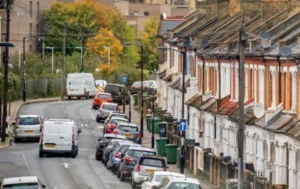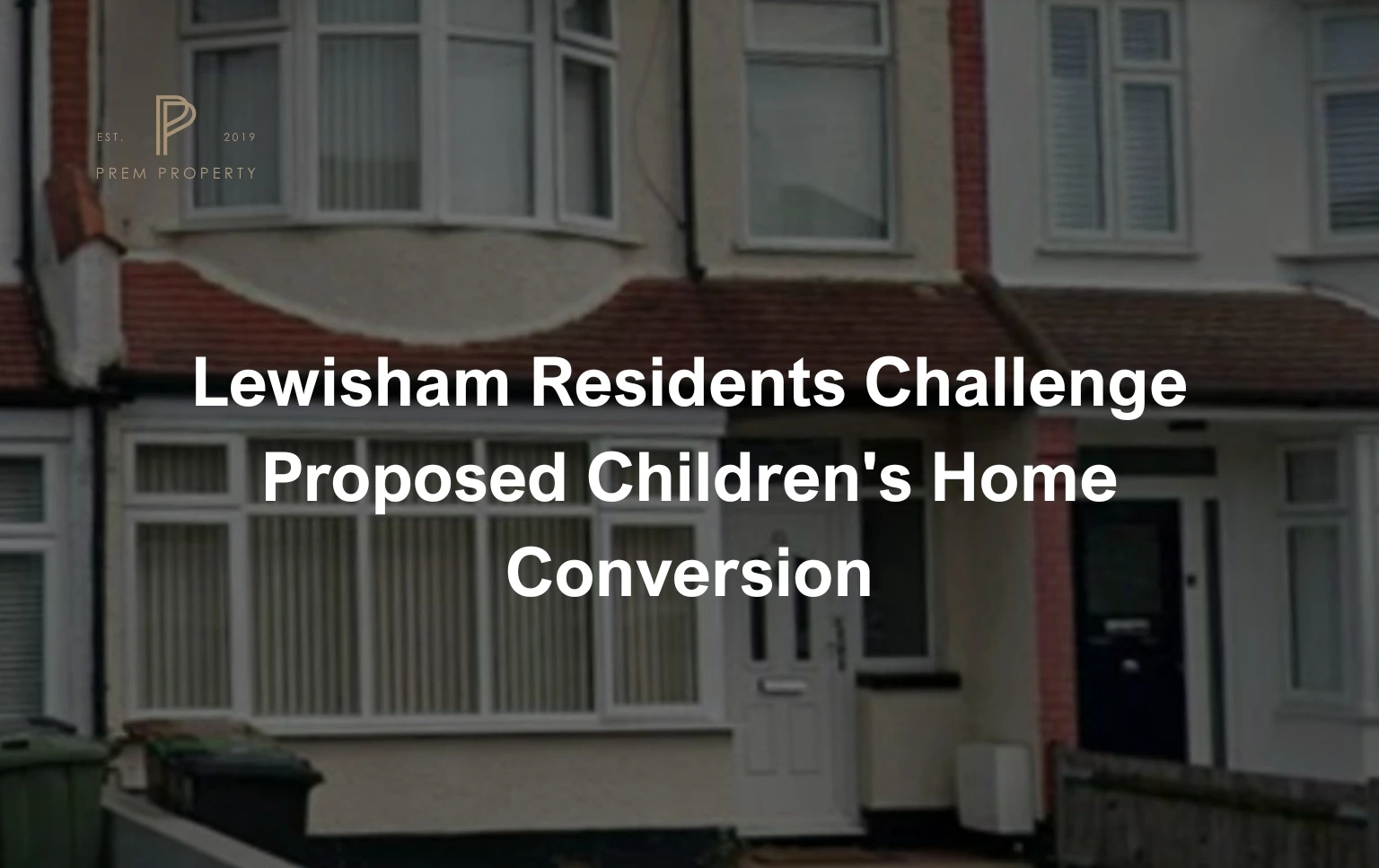Local residents have mounted significant opposition to plans transforming an empty Lewisham property into a specialist children’s care facility. The controversial proposal has divided the community, highlighting broader tensions surrounding residential development and social care provision in South London.
Planning Application Details
Developers submitted their application to Lewisham Council in June 2024, targeting the vacant three-bedroom property at 83 Colfe Road. Subsequently, the proposal has generated considerable local controversy, with sixteen formal objections already lodged against the scheme.
The conversion would accommodate several vulnerable children requiring long-term residential care within a stable, family-style environment. Furthermore, professional carers would operate round-the-clock shift patterns, ensuring continuous support whilst maintaining neighbourhood tranquillity.
Operational Framework
Planning documents reveal that the facility would house no more than two staff members simultaneously, operating discrete shift rotations to minimise disruption. Additionally, the applicants have committed to scheduling staff changes outside peak traffic periods, addressing residents’ parking concerns.
The proposed care home would function identically to a conventional family residence, featuring shared living spaces and typical household routines. Moreover, children would participate in regular activities including meal preparation, school attendance, and community clubs, fostering normalisation and integration.
Significantly, the developers have pledged to preserve the property’s existing external appearance entirely. Therefore, no structural modifications or architectural changes would occur, maintaining the street’s established character and aesthetic continuity.
Community Opposition
Despite these assurances, local residents have expressed substantial reservations about the proposal’s potential impact. Their objections primarily centre on anticipated noise increases, additional vehicular traffic, and fundamental changes to the residential area’s character.
However, these detailed objection letters remain confidential pending the council’s formal review process. Consequently, the specific nature of residents’ concerns has not been publicly disclosed, limiting broader community understanding of the opposition’s rationale.
Notably, the application has received zero public support comments to date, suggesting widespread local scepticism about the proposed facility. This absence of supportive voices contrasts sharply with the organised opposition campaign that has emerged.
Strategic Location Benefits
The property’s location offers several advantages for vulnerable children requiring specialist care services. Excellent transport connectivity provides convenient access to schools, healthcare facilities, and recreational opportunities throughout South London.
Furthermore, the residential setting would enable children to experience typical neighbourhood life whilst receiving professional support. This approach aligns with contemporary care philosophies emphasising community integration over institutional isolation.
Local amenities, including shops, parks, and community centres, lie within walking distance of the proposed facility. Therefore, residents could participate fully in local life, developing essential independence skills and social connections.

Policy Compliance
Planning consultants argue that the proposal satisfies both national and local planning requirements comprehensively. The National Planning Policy Framework specifically encourages specialist accommodation projects addressing demonstrated social needs within appropriate residential contexts.
Similarly, Lewisham’s Local Plan supports innovative housing solutions for vulnerable populations, provided they integrate successfully with existing communities. The application therefore presents a strong policy foundation for approval, despite local opposition.
Decision Timeline
Lewisham Council faces an imminent deadline to determine the application’s fate, with their final decision expected by 19th August 2025. This compressed timeframe adds urgency to ongoing community consultations and technical assessments.
Council planners must carefully balance legitimate resident concerns against pressing social care needs within their borough. Additionally, they must consider broader precedents that their decision might establish for similar future applications.
Broader Context
The controversy reflects wider national challenges surrounding children’s social care provision and community acceptance of specialist facilities. Many authorities struggle to secure appropriate accommodation for vulnerable young people whilst maintaining positive community relationships.
Housing pressures across London have intensified competition for residential properties, making suitable care facilities increasingly difficult to establish. Consequently, local authorities often face difficult choices between social obligations and community preferences.
Professional Care Standards
The proposed facility would operate under stringent regulatory oversight, ensuring high-quality care delivery and community safety. Professional carers undergo extensive training and background checks before working with vulnerable children in residential settings.
Moreover, regular inspections and monitoring would guarantee compliance with national care standards and safeguarding requirements. These measures provide additional reassurance to concerned neighbours about the facility’s professional operation.

Property Investment Considerations
For property investors considering similar conversions, specialist care facilities can offer attractive rental yields and stable long-term tenancies. However, planning permissions and community relations require careful navigation to ensure successful project delivery.
Prem Property – Guaranteed Rent Solution provides comprehensive support for landlords exploring alternative property uses, including specialist accommodation projects. Their experienced team understands complex planning requirements and can guide investors through the approval process effectively.
Economic Impact
The children’s home would generate local employment opportunities whilst contributing to the area’s social infrastructure. Professional care staff, maintenance contractors, and support services would all benefit from increased local demand.
Furthermore, the facility would demonstrate Lewisham’s commitment to supporting vulnerable children within their own communities rather than placing them in distant institutional settings. This approach delivers better outcomes whilst maintaining important family and social connections.
Regulatory Framework and Standards
Children’s residential care facilities operate within a comprehensive regulatory framework designed to protect vulnerable young people whilst ensuring community safety. Ofsted regularly inspects these establishments, monitoring care quality, safeguarding procedures, and staff competency levels throughout their operational lifespan.
Additionally, the Care Quality Commission oversees health-related aspects of residential care, ensuring children receive appropriate medical support and therapeutic interventions. These dual oversight mechanisms provide robust protection for both residents and neighbouring communities, addressing many concerns raised by local objectors.
Staff recruitment follows stringent vetting procedures, including enhanced DBS checks, professional qualifications verification, and ongoing training requirements. Consequently, only highly qualified professionals work within these specialist environments, maintaining exceptional care standards and community confidence.
Community Integration Strategies
Successful children’s homes actively promote positive community relationships through transparent communication and neighbourhood engagement initiatives. Regular liaison meetings, community events, and volunteer opportunities help build understanding and support amongst local residents.
Furthermore, children living in residential care benefit enormously from positive community connections, developing social skills and local relationships that support their long-term development. These interactions often prove more valuable than institutional alternatives, creating genuine belonging within established neighbourhoods.
Educational partnerships with local schools ensure seamless integration into mainstream education systems, whilst community sports clubs and youth organisations provide additional socialisation opportunities. Therefore, the proposed facility could enhance rather than diminish local community cohesion through careful management.
Alternative Accommodation Challenges
The shortage of suitable children’s care accommodation across London has reached crisis proportions, forcing authorities to place vulnerable young people in inappropriate or distant facilities. This placement crisis often separates children from familiar environments, disrupting education and support networks during critical developmental periods.
Moreover, emergency placements frequently cost significantly more than planned residential care, straining local authority budgets whilst delivering inferior outcomes for vulnerable children. Establishing local facilities like the proposed Colfe Road home could address these systemic challenges effectively.
Out-of-borough placements particularly disadvantage looked-after children, who lose contact with siblings, friends, and support networks essential for their wellbeing. Local provision therefore represents not just financial efficiency but fundamental child welfare improvement.
Property Market Implications
The conversion proposal reflects broader trends within London’s property market, where traditional residential uses increasingly compete with specialist accommodation demands. Care homes, supported housing, and educational facilities all seek suitable properties within established residential areas.
Property owners considering similar conversions should carefully evaluate planning prospects, community attitudes, and regulatory requirements before proceeding. Professional advice proves essential when navigating complex change-of-use applications and community consultation processes.
Prem Property – Guaranteed Rent Solution specialises in supporting landlords through these challenging conversion projects, providing expert guidance on planning applications, regulatory compliance and community engagement strategies. Their comprehensive approach ensures maximum success probability whilst minimising investor risks.
Financial Considerations
Children’s residential care represents a stable, recession-resistant investment sector with consistent demand and reliable rental income streams. Local authorities require these facilities regardless of economic conditions, providing landlords with exceptional tenancy security and predictable returns.
Furthermore, purpose-designed care facilities often command premium rental rates compared to standard residential lettings, reflecting their specialist nature and regulatory compliance requirements. These enhanced yields compensate investors for additional management complexity and regulatory oversight.
However, conversion costs, regulatory compliance expenses, and ongoing maintenance requirements must be carefully evaluated before proceeding with such projects. Professional financial modelling proves essential for accurate investment appraisal.
Environmental and Sustainability Factors
The proposal’s commitment to maintaining the existing building structure aligns with sustainable development principles by avoiding unnecessary demolition and reconstruction. This approach minimises environmental impact whilst preserving the street’s architectural character and historical continuity.
Adaptive reuse projects like this conversion demonstrate how existing housing stock can address evolving social needs without consuming additional land or construction materials. Such approaches increasingly influence planning policy development across London boroughs.
Energy efficiency improvements and modern care standards could actually enhance the property’s environmental performance compared to its current vacant state. Professional care facilities typically maintain higher heating, security, and maintenance standards than standard residential properties.
Looking Forward
As the decision deadline approaches, both supporters and opponents await Lewisham Council’s verdict on this contentious proposal. The outcome will significantly influence future children’s care provision within the borough and potentially establish important precedents for similar applications.
Whatever the decision, the debate has highlighted important questions about community responsibility, social care provision, and residential development priorities in contemporary London. These discussions will undoubtedly continue shaping local planning policies and community attitudes towards specialist housing needs.
The case demonstrates how local planning decisions increasingly reflect broader societal challenges around inclusion, community cohesion, and social responsibility. Ultimately, balancing these competing interests remains one of local government’s most complex responsibilities.
Council members must weigh immediate resident concerns against long-term social obligations, considering both community harmony and vulnerable children’s welfare needs. This delicate balance requires wisdom, compassion, and strategic vision from local decision-makers facing increasingly complex planning challenges.

